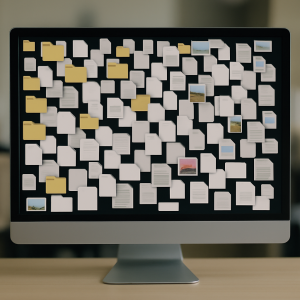 If you needed the latest version of a proposal, could you find it quickly? Would you know which version is final or who last edited it? Most business owners can’t.
If you needed the latest version of a proposal, could you find it quickly? Would you know which version is final or who last edited it? Most business owners can’t.
Usually, something like SharePoint or Dropbox gets set up, and people use it for a few days. Then files start getting saved to desktops, sent through email, or dropped into Slack again. Pretty soon, the same file exists in multiple places, and no one knows which one is current.
Here’s how to get it under control without making it complicated:
- List where files are being saved. Desktop, Email, OneDrive, random subfolders, just write it all down. This helps you see the mess clearly.
- Choose one main storage location. Dropbox, SharePoint, or another tool is fine, as long as it’s the one place everyone uses.
- Set simple naming rules. Use something like:
`Client_Project_Document.docx`For example: `J2Construction_DesignRefresh_ScopeOfWork.docx`
No more “FinalFINAL\_final\_THISONE.docx”
- Organize folders by real use.
Set them up like:
/Clients
/Contracts
/Invoices
/Assets
- Avoid catch-all folders like “Misc” or “John’s Stuff.”
- Limit access to who really needs it. This helps prevent mistakes and confusion.
- Turn on version history. Most cloud tools have it. Use it. It saves headaches.
- Assign a “folder person.” Someone to occasionally check that things stay organized.
- Clean up quarterly. Block an hour to archive old files, rename confusing ones, and delete duplicates.
Bonus Tips:
- Add a README file at the top of shared folders with basic instructions
- Set expiration dates on shared links
- Archive instead of deleting if you’re unsure
- Use a tool to find duplicate files
- Save files somewhere other than your Downloads folder
Even doing a few of these will make everything feel more organized.
